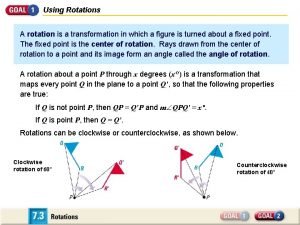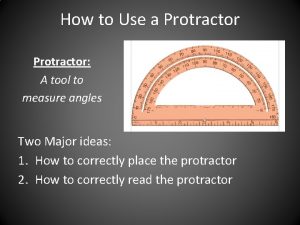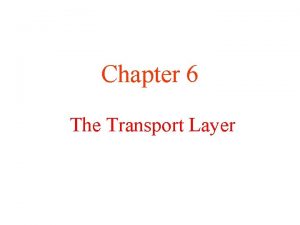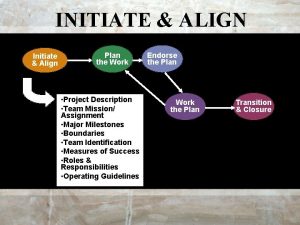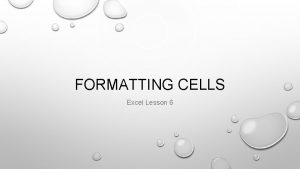Optics How to use a protractor Always align









- Slides: 9

Optics

How to use a protractor Always align the vertex of the angle with the center of the base line on the protractor. A B B is the vertex of the angle. C The base of the angle aligns with the base line on the protractor. For the light ray diagrams, the base of the angle is the normal. How many degrees is angle ABC?

The Law of “REFLECTION” The Law of Reflection states that- " the angle of incidence (incoming ray) equals the angle of The law works for FLAT, reflection (outgoing ray)" PLANE surfaces only. The angles are measured from a perpendicular line to the surface called a NORMAL What are the 4 qualities of the image? L O S T

L. O. S. T. LOST is used to describe images formed by mirrors and lenses. 1. L- Location: location of the image: is the image in front of or “behind” the mirror? 2. O- Orientation: which way the image is oriented compared to the original object: is the image upright or inverted? 3. S- Size: as compared to original object: is the image the same size, reduced, or magnified? 4. T- Type: is the image a real image or virtual image? This is the information you were providing for part G. 4

Locating images in a Plane Mirror reflected incident mirror brain traces object Real side Image of object Virtual side LOST 1. Behind mirror 2. upright 3. Same size 4. Virtual 5

Finding the image in a mirror We used to law of reflection to determine where an image would form in a curved mirror. Because this mirror was curved, it was hard to find the normal line perpendicular to the tangent of the curve, so we drew it through C. Instead of using the law of reflection, we used the 4 easy rays.

4 Easy Rays OA All incident rays start from the top of the object, 1) Incident ray parallel to the OA. Reflect through F. 2) Incident ray through F. Reflect parallel to OA. 3) Incident and reflected ray through C. 4) Incident ray to apex and reflected with an equal angle.

Image properties for mirrors Object location Plane mirror Concave mirror Behind C Concave mirror at C Concave mirror between C & F Concave mirror at F Concave mirror between F & apex Convex mirror Image Location Image Orientation Image Size Image Type

Lenses and images Converging/Convex Lense: -Mostly Real, Inverted, behind lense Diverging/Convace Lense: -Virtual, Upright (object/image on same side)


